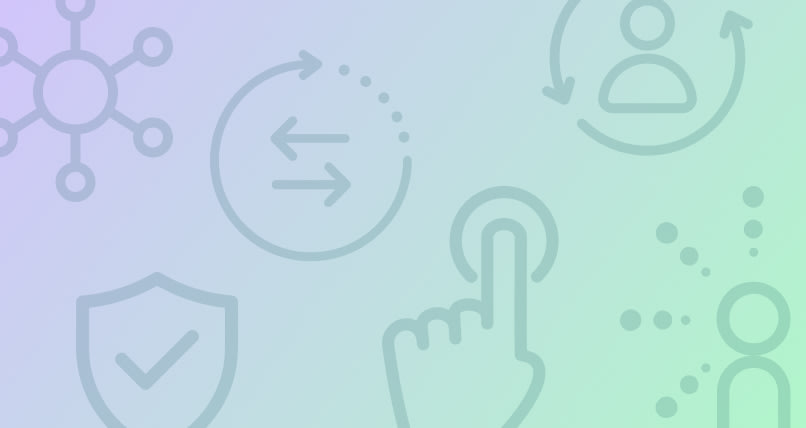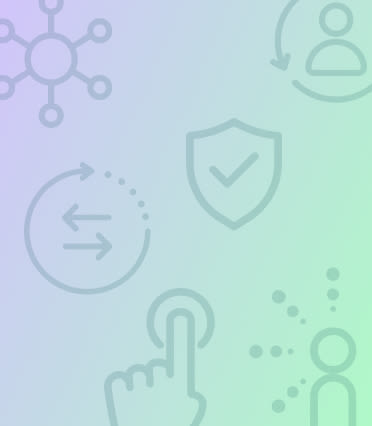
Nov 14
Tom Barker
Nov 14, 2023
Building customer loyalty: what can tech do to make it work for you?
The technology used by leading digital marketers is advancing so rapidly that many in the sector struggle to stay ahead of the curve – especially as fewer than half of CMOs have any kind of tech background. In this article, we’ll explore the untapped potential of technology to foster customer loyalty, a topic that remains relatively unexplored among marketers, and one our clients frequently ask about.
Marketing wasn’t invented with the advent of the Web thirty-plus years ago – it goes back to the production of goods in Mesopotamia (oCreative). But people haven’t changed much, so the behavioral psychology and theories around customer loyalty still work in many instances when they are mapped onto digital tech.
In tech terms, customer loyalty means having some basic requirements in place to take the user across key stepping stones – If a user can fall off any of those steps, you will almost certainly lose them. Let's take a closer look at the role tech plays in those steps:
1. Awareness of the service and offering
There are many ways of building brand and service offering awareness. One core way to build awareness is through digital marketing, including websites, web and mobile apps, online advertising, social media and email campaigns, all of which can generate leads.
Why not just dump the leads from various sources into a CRM? That can be done, but a lot of scripting in a CRM becomes a big technical chore and reduces flexibility – how often does your marketing department complain about tech being the limit to the number of campaigns that can run? We recommend Cloud-native tech using microservices that capture, clean, filter, and back up leads ahead of a CRM.
The AWS Simple Queue service eliminates up to 5% of lead form losses that die due to cellular drops, response time glitches, or CRM script errors and downtime. In the age of AI and data science, all your data should go to a data warehouse such as Redshift and be cleaned before ever getting to a CRM. Incidentally, once in a service like Redshift data analysis options dwarf anything that is offered by the leading CRM, Salesforce Marketing Cloud. One more note on this: if you have multiple destinations for your data, a data management tool such as Informatica will do the heavy lifting and is easily reconfigured with drag and drop interfaces.
Key takeaways:
Digital marketing is crucial for building brand and service awareness
Transferring campaign leads directly into a CRM can lead to technical challenges and less flexibility for future campaigns
Use Cloud-native microservices to capture, clean, filter, and back up leads before they reach the CRM
2. Working pathways to conversion
What happened to omnichannel marketing? It’s still the best way of capturing users using “all available means” and having those users convert, in theory. In practice, the complexity and time to build campaigns is a deterrent; a bad implementation will result in lost sales. You'll notice if you are still getting asked to buy a T-shirt across your various touch points after 6 months or to comment on a hotel stay that you have not yet had. Omnichannel is an extreme example, but even for single channel campaigns, the secret is making sure the tech works and that means having a solid QA testing plan before you release anything into the wild. Testing social media without going live through the full journey can be difficult, and every extra channel or pathway multiplies up the variations.
At Thrillworks we use automations, special test users, temporary URLs, and even unsociable hours to run live tests. We use online services to test our apps and websites on dozens of real hardware devices. Invest in the tools that reduce your QA to Dev ratio so your costs stay on track. A ratio of less than 0.4 is ideal and automations can really reduce this. We use TestEngine, Browserstack and App Automate among others.
Key takeaways:
Campaign complexity and unclear targeting or goals can lead to lost sales
Have a solid quality assurance (QA) testing plan in place to ensure the tech works seamlessly
Optimize QA testing with automations, special test users, temporary URLs, and various hardware devices
Invest in tools that reduce the QA to Dev ratio to help control costs and improve the efficiency
3. Frictionless engagement and usability
Frictionless used to mean a smooth UX/UI. As interface design increasingly becomes a commodity, although experience design is still very important, it is hard to make a splash in that area alone. But tech integrations to enhance and improve usage have never been more plentiful or simpler to add to websites, apps, and social media. Even super advanced AI integrations have started to become the norm through services such as Amazon Bedrock.
This also makes deep A/B user testing very straightforward as many services can literally be hot swapped in and out of the stack for offline or live evaluation. The SEO reporting can be bound up with A/B changes and scripted, or the algorithms behind Google Ads say can be left to do the sorting for you, but at the cost of a deep understanding of the impact of your choices. Having said all of that, the basics have to be working really well, so focus on a stack that runs really quickly.
At Thrillworks we recommend statically generated Websites that are blindingly fast and secure. You can get instant response times from APIs, for example by using a queue service in the Cloud. Apps shouldn’t use device services that are most likely turned off by a user – they will get annoyed or not bother as they are usually off for a reason.
Key Takeaways:
A frictionless experience goes deeper than UX/UI and includes the tech behind it
AI can make A/B user testing more straightforward and allow for easy swapping of services
Regardless of the tools used, your basics have to be working really well
Focus on tech stacks that run quickly with few user device dependencies
4. Transparent transactions
One of the greatest sources of anxiety for a user is financial transactions and for good reason. Victims of cybercrime in Canada in 2022 suffered $530 million of losses. It is critical that the tech include two-factor authentication, reputable and well-known transaction services, and the best encryption realistically possible – we advise AES256. Familiarity and security need to be in balance. Although total online security can be found with blockchain technology, bear in mind that to many users, this is unfamiliar and will be perceived as a risk, for now. A big part of peace of mind for a user is instant notification of the transaction via several channels – typically SMS in brief and email for a detailed PDF. The format does count. If somebody has spent their valuable cash, emailing a PDF rather than in-body text will build trust. This leads us nicely to the next point.
Key takeaways:
Create security through Two-Factor Authentication, reputable and familiar transaction services, and robust encryption like AES256
Provide peace of mind with instant transaction notifications through SMS and email
5. Build trust
Even with the greatest tech and experience design, don’t forget that humans move at their own pace with trust. Our behavior circuits are wired to give it slowly but lose it fast. How does tech build trust? Trust is emotive, but it is also based on repeated, self-reinforced experiences and consistency, so the number-one approach is to maximize just those characteristics of your stack, managed services and maintenance.
Maintain a high uptime – AWS offers 99.99% or 99.95% uptime. Those figures might look too similar to worry about, but over a year there is a difference. Don’t push hot updates to your stack even in a crisis as you’ll get downtime on occasions or worse. Generally, big functional changes that are visible to a user are not worth it even if the tech is a bit better as a result. The caution used by UX/UI updates also applies to visible tech.
Something that may be painful for Agile fans to hear is that moving fast and breaking things is definitely not what you need to do with modern stacks anymore. Bundling and timing tech updates, solid user acceptance testing, a QA environment and regression testing without endless “Stetting” of issues all help. And finally: push the release date back if you are not ready. Trust me, it works!
Key takeaways:
Trust is emotive, but it is also based on repeated, self-reinforced experiences and consistency
Maintaining a high uptime is crucial, as even slight downtime can create user doubt
Prioritize caution and solid user acceptance testing when implementing big functional changes that are visible to users
Be willing to delay release if not prepared to maintain user trust
6. Achieve loyalty
You got this far with your users, some good news. They are stepping onto the other side of the riverbank, so you have loyalty. But that’s not enough, you want that loyalty to grow. In reality, digital loyalty usually grows or declines but rarely stays constant. So how do we grow it endlessly? That sounds like a lot of work. The best approach to use here is Nir Eyal’s Hooked Model which has a focus on stickiness – having the user come back again and again.
Interestingly, the work is done by your user. This is accomplished by getting the user to constantly invest effort until moving to another service becomes a high obstacle. To do this, have the user provide information on a continuing basis in a compelling way that has dividends for them. Facebook achieves this after you have posted a lot of content. Few users will want to build it up all over again elsewhere. A travel service may do it by holding your extensive preferences, saved bookmarks, upcoming travel plans, photo albums that you can order as print copies, and perhaps shared stories. Or maybe you are including an AI service as part of a real estate app, and the AI behaves like a human agent. It remembers your needs and keeps building and refining your options every time you visit. All of these examples get the user to invest the effort. And this stickiness gets you the loyalty jackpot.
Key takeaways:
Building digital loyalty is a continuous process
Loyalty usually either grows or diminishes over time, rarely staying constant
Adopt Nir Eyal's Hooked Model, focusing on stickiness and having the user return repeatedly
Create user investment through saving preferences, unique content, a personalized experience, and ongoing, compelling incentives
In conclusion
It’s often a struggle to get all of these right and unfortunately it is very much a a success or fail situation. As with the stepping analogy, if one stone is missing then nobody will cross the river. Why is it so challenging? The tech used is quite diverse and involves multiple areas: front end, social, cloud, data analysis, CRM and customer journeys. It is also essential that the sales and marketing teams work closely with the developers and understand the principles and limitations of what is being built and how flexible and scalable it is.
- Technology & Engineering
- Retail
- Quick Service Restaurants
- Consumer Media and Entertainment





